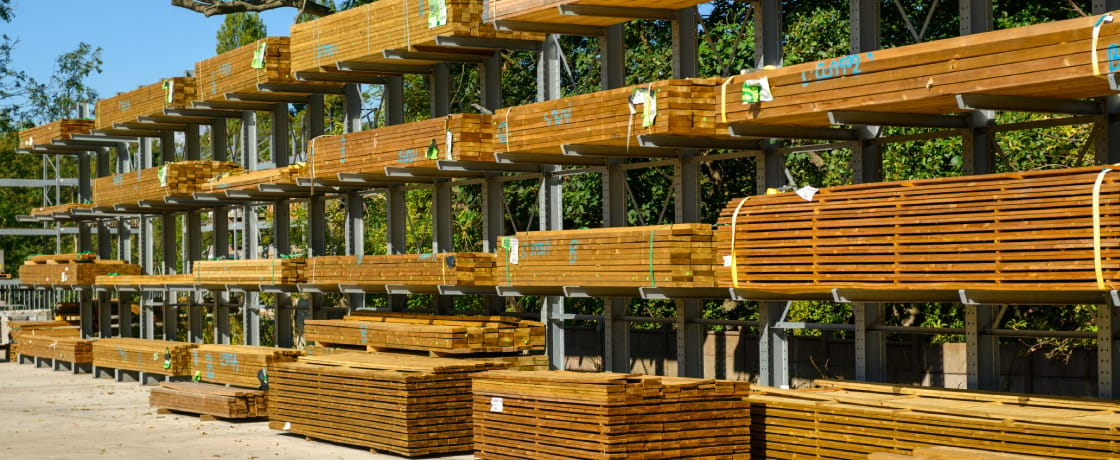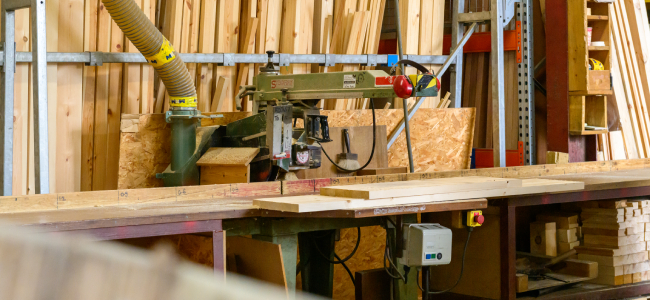
Should You Use Hardwood or Softwood in Your Timber Project?
Published on October 12, 2025
Posted in Advice & Reviews
by MKM
3 min read
If you’re planning a project with timber, one of the first choices you’ll face is whether to use hardwood or softwood. It’s a decision that affects not just cost and appearance, but the durability and lifespan of your build.
From decking and cladding to furniture and framing, different woods bring different strengths. Let’s look at how hardwood and softwood compare, and when each one is the better choice.

What is hardwood?
Hardwood comes from broadleaf trees such as oak, ash, or teak. It grows more slowly than softwood, which gives it a dense grain structure that makes it tough and long-lasting.
Benefits of hardwood
- Long-lasting durability – many hardwoods last decades
- Attractive appearance – unique colours and striking grain patterns
- Good outdoor performance – tropical hardwoods like Balau resist weathering well
- Perfect for furniture, flooring, and decorative finishes
Things to know
- More expensive than softwood
- Heavier and sometimes harder to cut or drill
- Can require pre-drilling for screws
What is softwood?
Softwood comes from coniferous trees such as pine, spruce, and fir. It grows faster, making it lighter, easier to use, and more affordable.
Benefits of softwood
- Budget-friendly – ideal for large projects
- Easy to cut, shape, and fix – great for beginners
- Takes treatment well – pressure-treated boards perform well outdoors
- Suitable for framing, cladding, decking, fencing, and more
Things to know
- Less naturally durable than hardwood
- Needs regular treatment or finishing outdoors
- More prone to warping if not dried properly
Hardwood vs softwood: durability at a glance
|
Feature |
Hardwood |
Softwood |
|
Density |
High – dense and strong |
Lower – light and workable |
|
Durability |
25–50+ years (depending on species) |
10–25 years (with treatment & care) |
|
Maintenance |
Low to moderate |
Regular oiling, staining, or painting |
|
Best Uses |
Furniture, flooring, cladding, decking |
Framing, fencing, decking, cladding |
Which should you use for your project?
- Decking
- Softwood: Affordable, easy to install, performs well with treatment.
- Hardwood: Offers a premium look, requires minimal maintenance, and boasts a very long lifespan.
Shop timber decking boards at MKM
- Furniture or joinery
- Hardwood: Strong, polished finishes for furniture, staircases, or cabinetry.
- Softwood: Ideal for painted furniture, shelving, and framing.
Explore kiln-dried hardwood at MKM
- Framing and structural work
- Softwood carcassing timber is the practical, cost-effective choice.
View structural carcassing timber at MKM
- Softwood carcassing timber is the practical, cost-effective choice.
- Cladding
- Hardwood cladding develops a silver-grey patina over time.
- Softwood cladding works well if regularly treated.
See timber cladding options at MKM – for example: - Western Red Cedar Cladding, 18mm x 132mm, Spooned & Rounded
- Radiata Pine Therwood Cladding, Class 2, 19mm x 144mm
Getting the most from hardwood and softwood
Choosing between hardwood and softwood is only the first step. Here are some different ways to get more value and performance from your timber:
- Think about the environment
Hardwood weathers differently from softwood. If you’re using softwood outside, plan where it sits: keeping it off damp ground or away from constant shade can help it last years longer. - Mix and match
Many projects don’t have to be all one or the other. For example, use structural softwood for the frame of a garden bench, then finish it with hardwood slats for a tougher, premium feel. - Use colour to your advantage
Hardwood often develops a silver-grey patina outdoors, which some love and some don’t. If you prefer consistent colour, consider softwood with a tinted treatment or a UV-protective oil, such as: - Factor in the fixings
Dense hardwood can chew through standard screws. Investing in quality deck screws like C2 Deck-Fix Premium Screws makes the job faster and neater. - Work smarter, not harder
Softwood is easier on tools and your arms. If you have a large project with numerous cuts, it might save you time and effort compared to hardwood.
Making the choice: hardwood or softwood?
There’s no one-size-fits-all answer – the right timber depends on your project. If you want premium looks and long life, hardwood is hard to beat. If you’re focused on cost, flexibility, and availability, treated softwood is an excellent choice.
Whichever way you go, MKM has a full range of timber products in stock – from structural softwoods to kiln-dried hardwoods – and branch specialists who can help you pick the right option.
Browse MKM’s full timber range